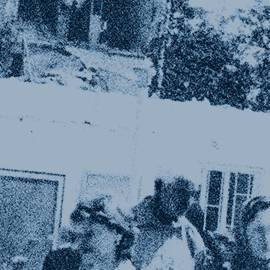Death of civilians
The International Criminal Tribunal for the former Yugoslavia in the Blaškić case referred to Article 3 of the Geneva Conventions and interpreted the notion of civilian population as “persons who are not or are no longer members of the armed forces”.[1]
All the data available in the Natalia Estemirova Documentation Center Database (hereinafter – the Database) on the civilian population that suffered during the second Chechen war has been analyzed and registered in accordance to this definition.
Thus, of the total 5,181 victims killed in Chechnya during the conflict, at least 3,271 were civilians.[2] This constitutes approximately 63% of the total number of people killed during the war. This data also includes those who, as per the abovementioned definition, were no longer members of any armed forces at the time of their death. This could be, for example, civilians who had previously participated in hostilities, but ceased to do so and subsequently returned to civilian life.
The statistics demonstrate that the majority of civilian victims (1,929 individuals) were adults, that is between the ages of 18 and 60. In addition, at least 294 children (146 under the age of 14 and 148 teenagers) and 304 people over the age of 60 died as a result of the hostilities. The age of 744 victims remains unknown. The majority of the victims, that is 2,559 individuals, were male. As for the number of female victims, at least 712 women and girls died during the war.
Based on the information analyzed in the Database, it can be assumed that approximately 42% of the civilian victims were, at the time of their death, in vulnerable conditions due to factors such as pregnancy, illness, disability, or by reason of age (see chart 1). It has been established that at least 23 pregnant women died in the conflict. 47 victims suffered from differing degrees of disability; for example, some individuals had limb defects, others were paralyzed, deaf or blind.
At least 21 of the killed victims suffered from psychological or mental illnesses, including dementia. In some cases, due to their mental illness, victims had adversely reacted to the sight of the military and subsequently attempted to run away from them out of fear. In response to these actions, the military simply shot down the victim with no actual attempt made to apprehend the victim in any other way.[3] Such was the case for a 17-year-old victim.[4]
Victims were also vulnerable when placed in situations where they were unable to resist the attack. This includes, for instance, cases where the victim was wounded or in cases where the victim was a combatant but was unarmed. At least 630 people found themselves in such situations, where their movements were restricted and they could not escape or hide. In general, these circumstances emerged during sweeping and special operations (zachistkas). In the course of such operations, the military would surround houses to restrict victims from escaping or hiding and subsequently enter the houses and shoot those present.[5] In other instances, individuals were taken away during the zachistka, and their corpses were discovered later, close to the village.[6] Victims were also placed in desperate situations when they were detained at random and without reason. Their mutilated corpses were subsequently discovered by their relatives.[7]
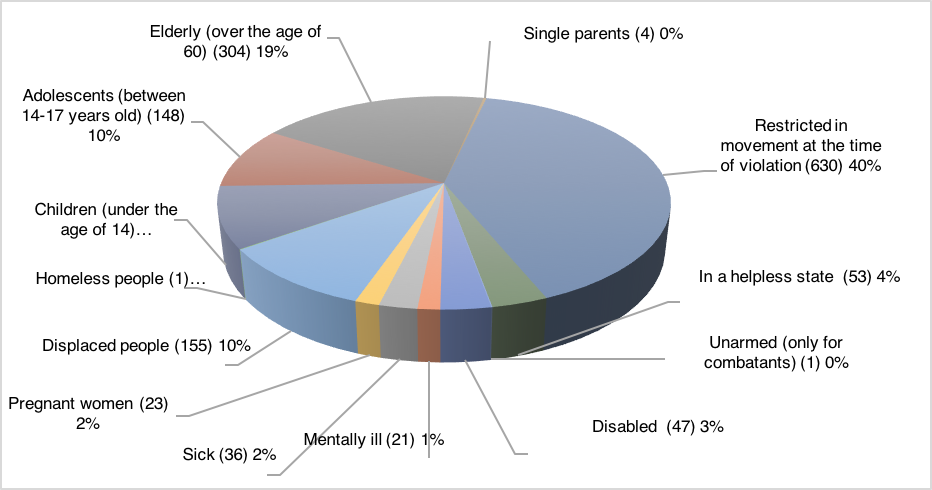
The civilians who died during the war can be divided into three main groups (see chart 2). The first group encompasses victims whose deaths were attributed to the actions of military personnel or members of the Russian security forces. The second group consists of civilians who lost their lives as a consequence of acts committed by militants/irregular fighters and the third group includes those who were killed as a result of actions committed by unidentified individuals.
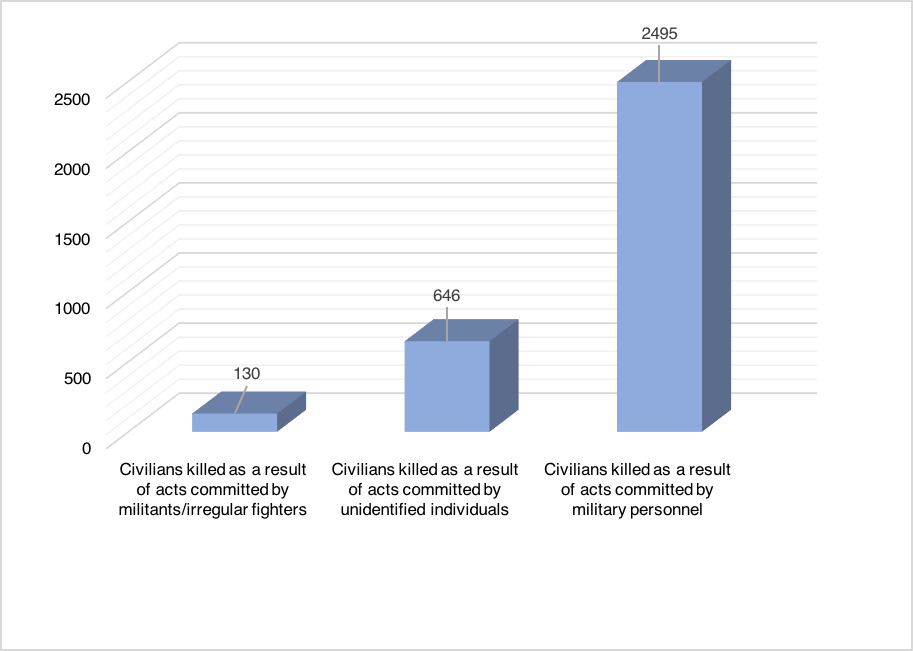
Data from the Natalia Estemirova Documentation Center allows for, among other things, a geographical analysis of the violations in question, particularly in relation to the locations of the crime scenes i.e. where the murders were committed, as well as the circumstances surroundings the violations. For instance, it can be concluded that at least 882 victims were killed either at home or after they were forcibly taken away from home; 508 of them were shot while 69 were killed using cold steel arms.
According to data, at least 126 civilians were detained and killed at a checkpoint controlled by the Russian military.
The table below provides a clear breakdown of the relevant data:[8]
| Use of firearms | Cold steel arms | Use of hard, blunt objects | Decapitation | Use of electric shocks | Asphyxiation | Burning alive | Night or curfew | |
| Household | 508 | 69 | 31 | 15 | 5 | 3 | 13 | 419 |
| Checkpoints | 74 | 15 | 6 | 3 | 1 | 5 | 4 | 11 |
| On the road | 201 | 19 | 12 | 6 | – | 1 | – | 13 |
| Filtration camps[9] | 8 | 5 | 1 | – | 1 | – | – | 6 |
Based on the data above, the majority of the murders were committed by use of a firearm. Furthermore, excessive forms of cruelty, such as decapitation and the burning alive of victims, have been exposed in the data.
Assessing the data, a number of observations can also be made in relation to the circumstances surrounding the death of civilians during the conflict.
At least 712 people were killed during the bombing of villages and cities in Chechnya, including both land and aerial attacks. Between September and December 1999, Chechnya came under attack on 58 separate occasions with the use of tanks, artillery and aircraft. In 2000, the number of attacks dropped to 55 and since 2001, the number of air attacks have decreased significantly. In 2001 and 2002, there were 31 and 16 such attacks, respectively.
Moreover, at least 863 civilians were killed in the course, or in the aftermath, of special operations of various sizes. In Grozny alone, at least 307 civilian deaths can be attributed to the actions of military personnel. Examples of the largest special operations – or zachistkas– that took place are: the village of Novye Aldy on 5 February 2000 (at least 62 civilians killed);[10] in the village of Chechen-Aul of the Groznensky (Selsky) region, between 11 and 26 June 2002 (at least 12 people killed);[11] and in the village of Alleroy in the Kurchaloyevsky District, between 15 and 27 August 2001, during a complete blockade of the village (at least 8 people killed).[12]
Large-scale operations were also carried out in Argun, Starye Atagi, Tsotsi-Yurt, Alkhan-Kala as well as other cities and large villages.
It should be noted that this data does not refer to those individuals who disappeared during the zachistkas.
The data also establishes that at least 145 victims were killed as a result of explosions of anti-personnel and anti-tank mines. At least 47 of these victims were minors and 11 of them were over the age of 60 (as shown in the chart 3 below).
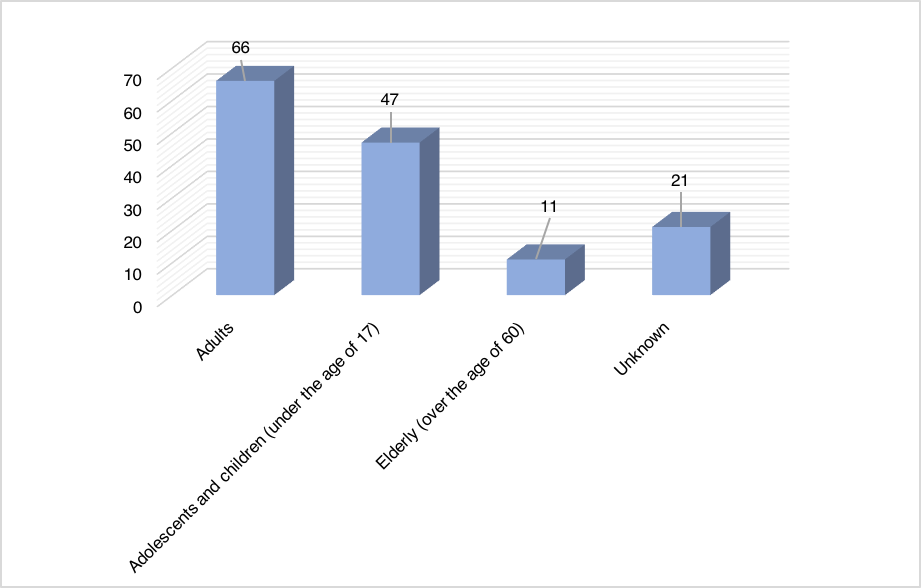
A number of civilians were also killed as a result of rear-end collisions by military vehicles. The Database shows that rear-end collisions by armored personnel carriers, self-propelled artillery mounts and tanks had fatal consequences for 36 victims.
For example, in October 2000 in Grozny, a civilian vehicle belonging to a resident of the city was crushed under a self-propelled artillery. The car-owner’s entire family (wife, daughter and granddaughter) was in the vehicle at the time of the incident. The owner himself was examining the ruins of his house and therefore incidentally survived. Witnesses claimed that the incident was not in fact an accident as the operator of the self-propelled artillery exited the convoy and deliberately set course for the victims’ car parked at the side of the road. Residents of nearby houses and bypassing motorists immediately attempted to obstruct the artillery, however were unsuccessful. The military column from which the artillery had diverged did not stop but drove towards Khankala. A criminal case was initiated and the serviceman responsible was convicted and given a five years’ suspended sentence.[13]
It must be mentioned that in seven of these rear-end collision cases, which together left 36 victims, including five children, the military personnel had been intoxicated at the time.
Civilian deaths also occurred in the midst of armed clashes due to regular fighting between federal forces and militants in Chechnya. Accordingly, the Database contains details about 23 people killed in armed clashes, of which five were women.
The statistics provided were updated on 18 March 2019.
The data is subject to change in view of the ongoing work by the Natalia Estemirova Documentation Center on the search and identification of victims of the armed conflict.
Audio library
Listen to an interview with a father who found his sons executed in a barn.
For details on this story, see the “Audio” section.
Listen to the story of a woman whose village Goy-Chu (Komsomolskoe) was stormed and the possible death of her children.
For details on this story, see the “Audio” section.
Listen to the story of a resident who witnessed a missile strike in the center of Shali.
For details on this story, see the “Audio” section.
Listen to the story of a refugee from Alkhan-Kala concerning the “sweeping operation” in the village.
For details on this story, see the “Audio” section.
Listen to the story of the killings of people in the Staropromyslovsky District and the removal of corpses by their relatives.
For details on this story, see the “Audio” section.
Listen to the story of a woman who survived the storming of the city of Grozny.
For details on this story, see the “Audio” section.
Listen to the story of a witness to the bombing of the city of Urus-Martan.
For details on this story, see the “Audio” section.
Listen to the story of the killings in the city of Grozny between January-February 2000.
For details on this story, see the “Audio” section.
Listen to the story of women who left the village of Katyr-Yurt.
For details on this story, see the “Audio” section.
Listen to the story of a woman who visited her village following a “sweeping operation”.
For details on this story, see the “Audio” section.
Listen to the story of a witness to the bombing and shelling of the city of Shali.
For details on this story, see the “Audio” section.
Media library
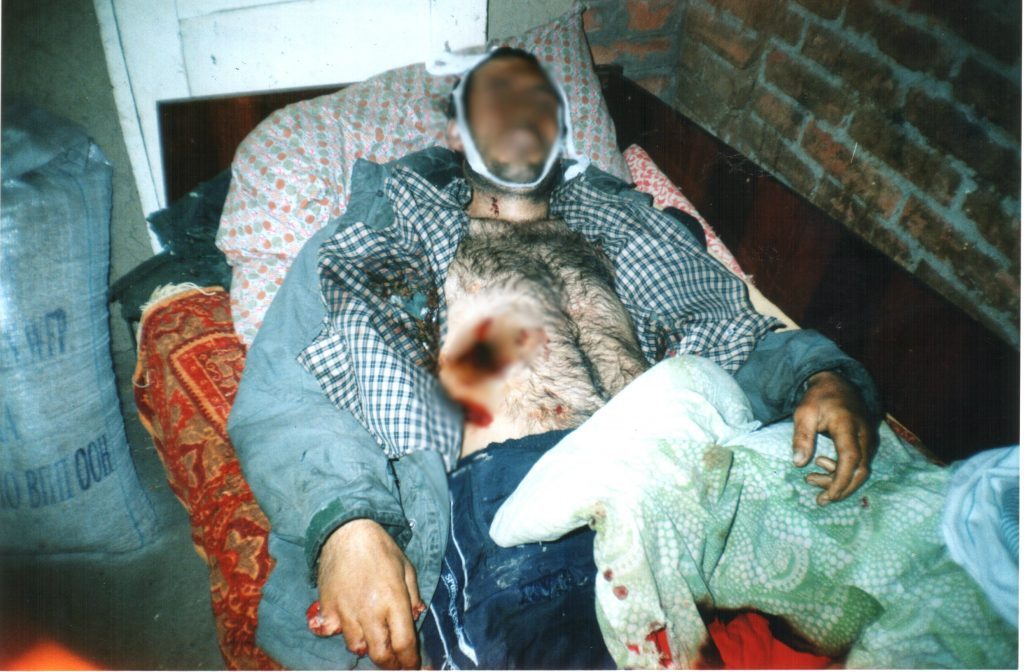
NEDC document 27845 
NEDC document 29260 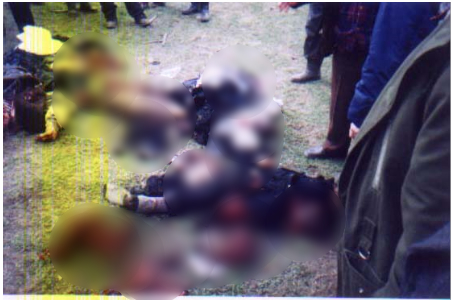
NEDC document 32118 
NEDC document 27937 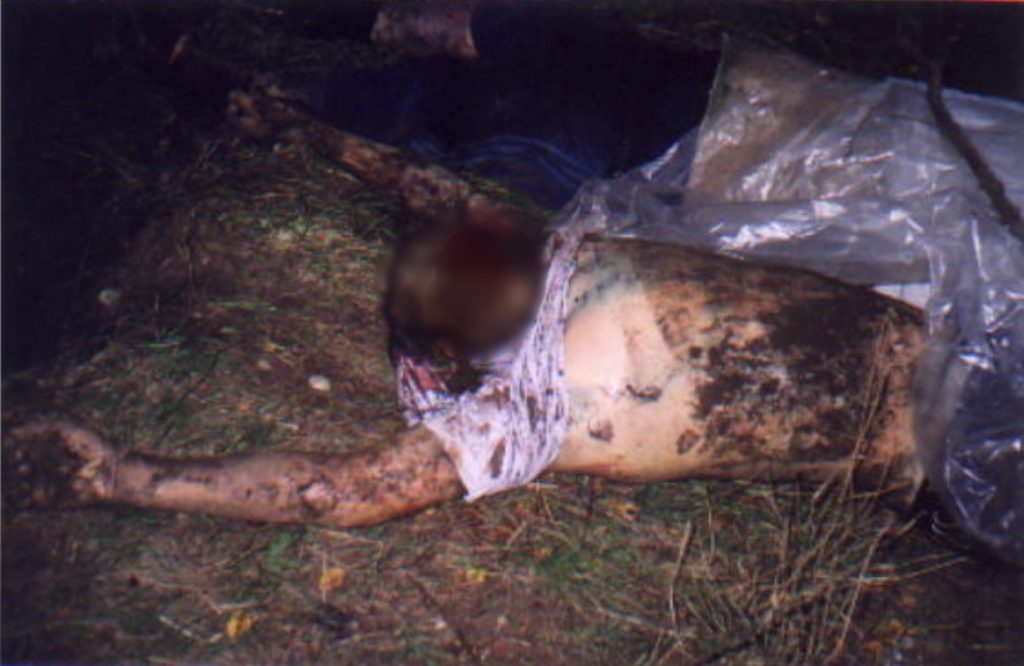
NEDC document 33450 
NEDC document 31827
References
[1]ICTY, Prosecutor v. Blaškić, Case No. IT-95-14, Judgment of 3 March 2000, § 180.
[2]The Database mainly contains information about violations committed during the period of the second armed conflict that started in 1999. However, it also contains sporadic facts recorded during the first armed conflict.
[3]For instance, Victims №№ 54942, 45544, 45928.
[4]Victim № 48368.
[5]Incidents № 274 «Execution of family Sh. in the village of Bachi-Yurt, May 2003».
[6]Victim № 7249.
[7]Incident № 186 «Special operation in Chechen-Aul, October 2002».
[8]The data in the table shows the number of cases in which particular circumstances were recorded. Due to the fact that several circumstances could be recorded in the Database in relation to the same victim, the total number of actual victims may be lower than the numbers indicated under specific circumstances.
[9]Little information is known surrounding the deaths of those individuals that had been taken to filtration camps. In most cases, the bodies of those who disappeared were returned bearing signs of torture.
[10]Incident № 271 «Zachistka in Novye Aldy, February 5, 2000».
[11]Incident № 148 «Zachistka in Chechen-Aul, June 2002».
[12]Incident № 981 «Zachistkа in Alleroy, August 15-27, 2001».
[13]Incident № 5596 «The death of family members T. in Grozny as a result of an accident, October 2000».
